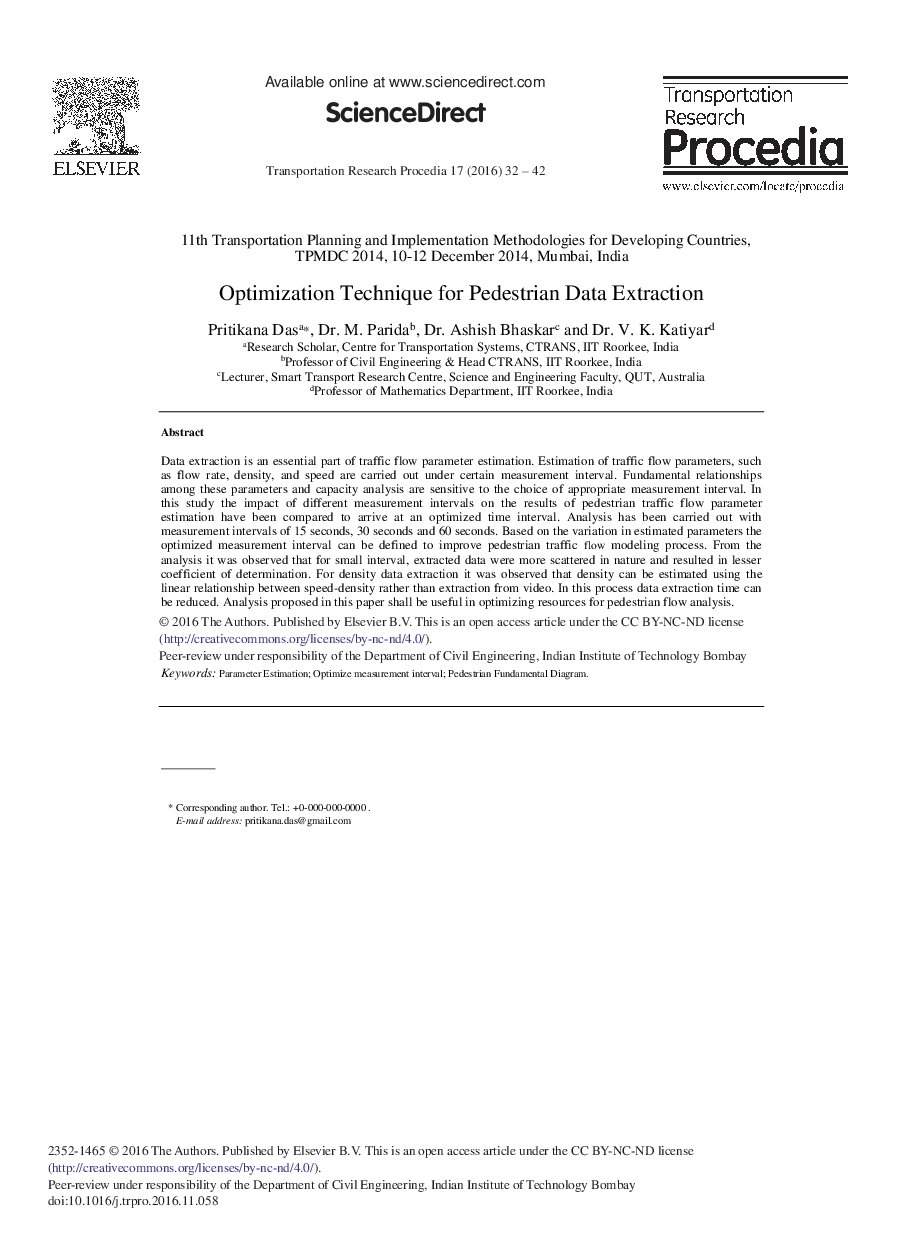| Article ID | Journal | Published Year | Pages | File Type |
|---|---|---|---|---|
| 5125554 | Transportation Research Procedia | 2016 | 11 Pages |
Data extraction is an essential part of traffic flow parameter estimation. Estimation of traffic flow parameters, such as flow rate, density, and speed are carried out under certain measurement interval. Fundamental relationships among these parameters and capacity analysis are sensitive to the choice of appropriate measurement interval. In this study the impact of different measurement intervals on the results of pedestrian traffic flow parameter estimation have been compared to arrive at an optimized time interval. Analysis has been carried out with measurement intervals of 15 seconds, 30 seconds and 60 seconds. Based on the variation in estimated parameters the optimized measurement interval can be defined to improve pedestrian traffic flow modeling process. From the analysis it was observed that for small interval, extracted data were more scattered in nature and resulted in lesser coefficient of determination. For density data extraction it was observed that density can be estimated using the linear relationship between speed-density rather than extraction from video. In this process data extraction time can be reduced. Analysis proposed in this paper shall be useful in optimizing resources for pedestrian flow analysis.
